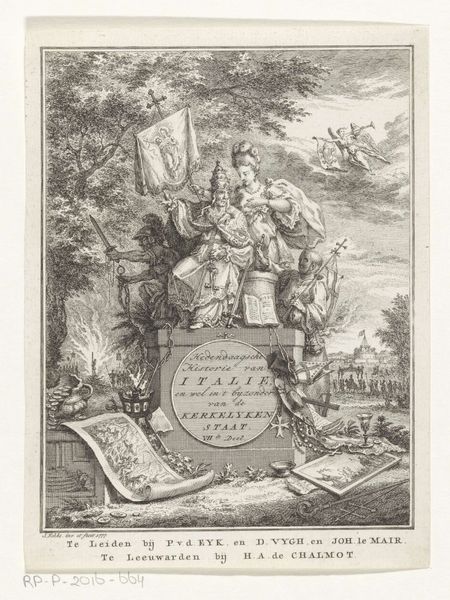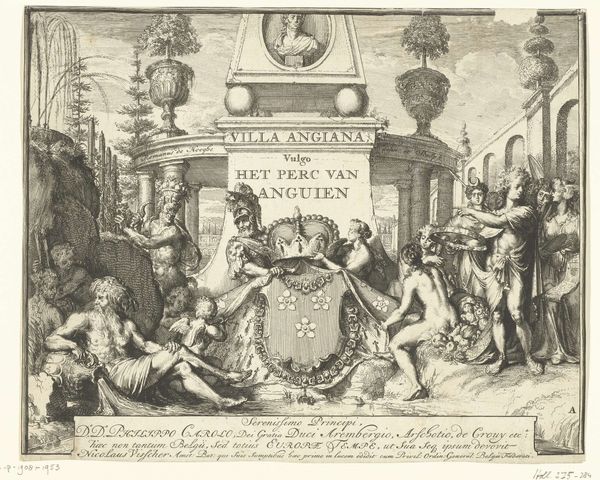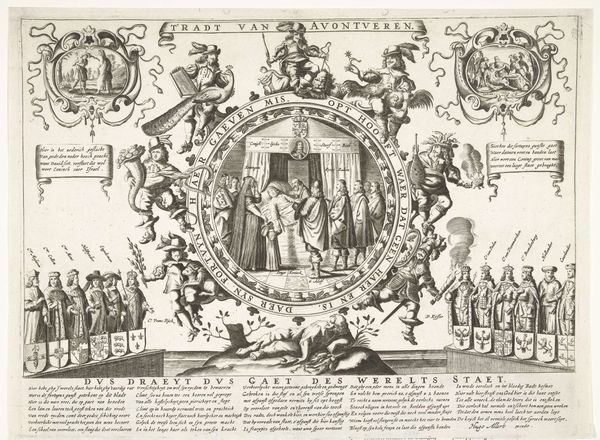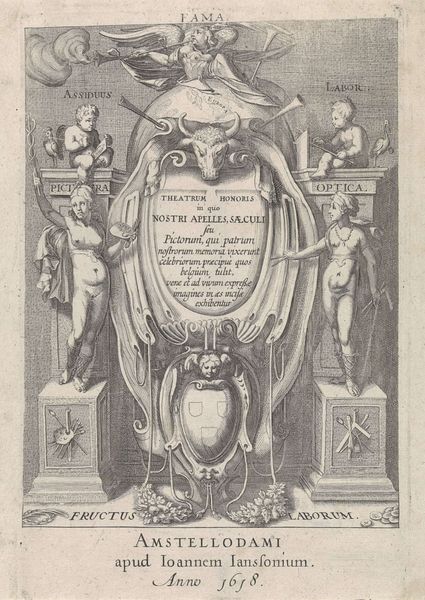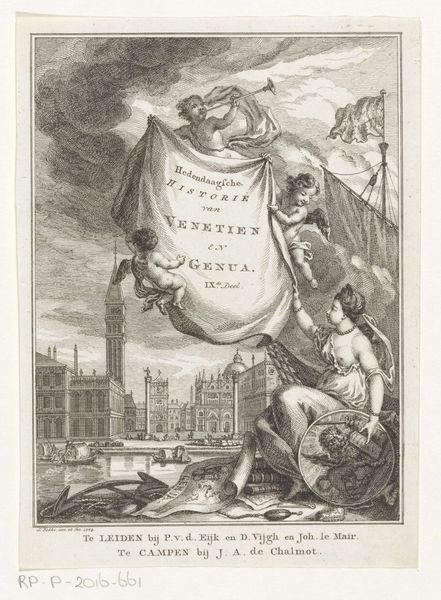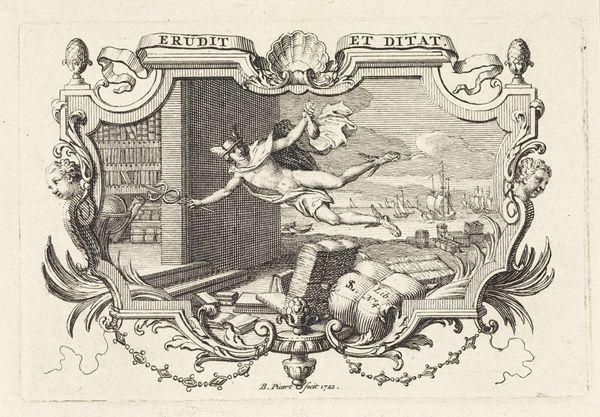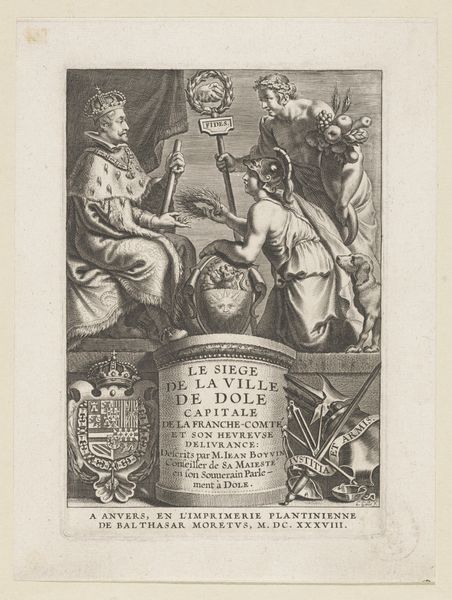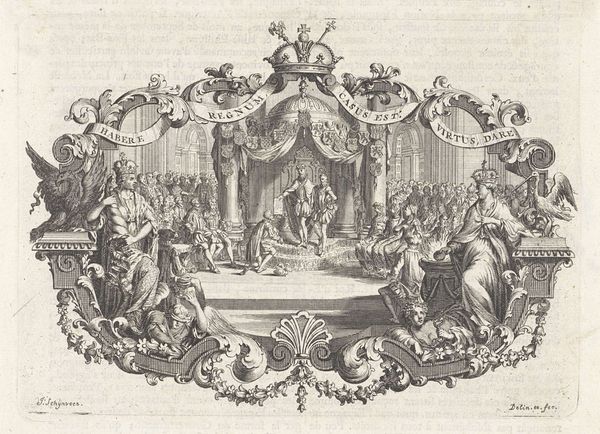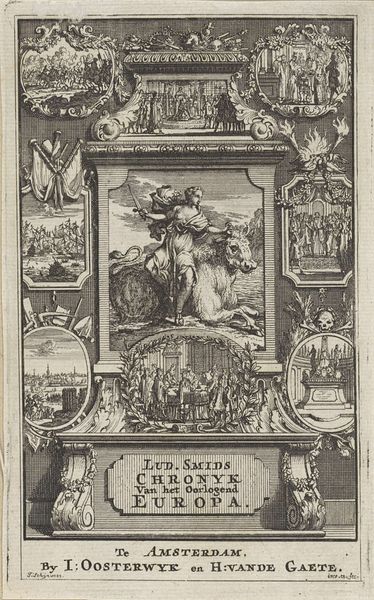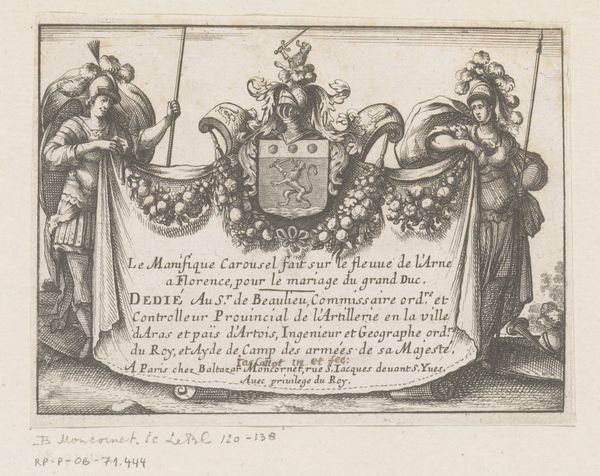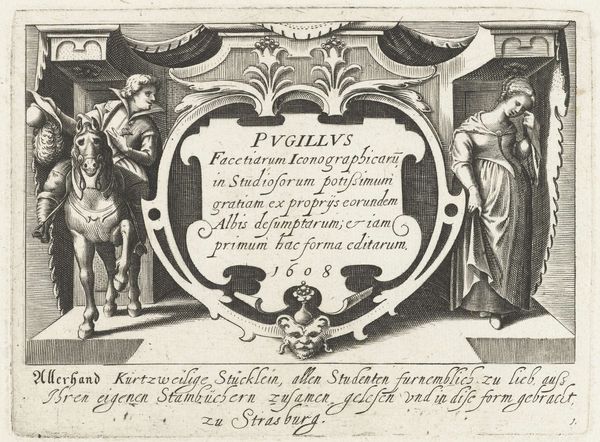
print, engraving
#
comic strip sketch
#
aged paper
#
allegory
#
baroque
#
mechanical pen drawing
# print
#
old engraving style
#
sketch book
#
personal sketchbook
#
pen-ink sketch
#
pen work
#
sketchbook drawing
#
cityscape
#
history-painting
#
storyboard and sketchbook work
#
engraving
Dimensions: width 169 mm, height 131 mm
Copyright: Rijks Museum: Open Domain
Curator: This engraving, "Riviergod Thames op een voetstuk" from 1707 by Jan Goeree, presents such a rich tableau. What strikes you most about it? Editor: It's an intricate print. The central figure, seemingly Father Thames, dominates the upper register along with these heraldic devices on the lower, but the depiction feels almost… commercial? How does it fit into the artistic practices of the time? Curator: Exactly! Think about the function of prints then: mass production and dissemination of information. This wasn't 'high art' destined for a palace, but more akin to early advertising or book illustration. We should consider the material conditions of its creation: the engraver’s tools, the printing press, the paper itself – all playing a role in its reach. Editor: So the "high art" allegorical figure and the heraldry are intertwined with what's almost a mass-produced object? What are your thoughts on the relationship between those elements here? Curator: Absolutely. The river god, and indeed the depiction of London in the background, were themselves being packaged for consumption, offered as representations of British power and history for a growing reading public. Even the coat of arms relate to regions that would have consumed this print. This interplay underscores how artistic value and function are often products of the means by which it was produced and circulated. Consider the intended audience for "Les Delices de la Grand Bretagne," and their potential for consumerism? Editor: So it's not just about the image itself, but the way it was made, distributed, and used? Considering those aspects changes the perspective completely! Curator: Precisely. It grounds our appreciation in the labor, materiality, and intended usage – reminding us that art, even allegorical, is deeply enmeshed with commerce and broader society. It challenges those historical boundaries separating artistic integrity from that which makes it successful for distribution. Editor: I'll definitely look at prints differently from now on. It's much more than just what you see in the lines. Curator: Agreed. By acknowledging those production elements, we grasp this object’s significance far more thoroughly.
Comments
No comments
Be the first to comment and join the conversation on the ultimate creative platform.
